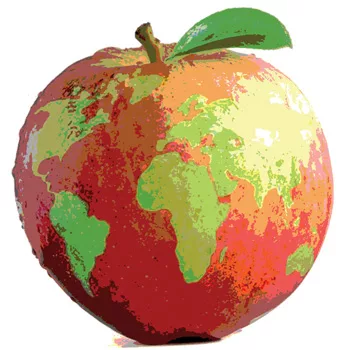Safe Food in a Changing World

Since the onset of the present international economic crisis, particularly in some European countries, I have been wondering how it will affect the efforts over the last couple of decades to assure food safety and promote consumption of healthy food.
In the 1990s, the outbreak of “mad cow disease” in the United Kingdom and some other countries, together with the dioxin crisis in Belgium, awakened European governments to the vulnerability of the food chain. These and other events triggered a new era in European food safety. New policies were drawn up in all European Union member states, more demanding legislation was imposed and national and European agencies responsible for assessing and communicating food safety risks were set up in line with those in Nordic countries. During the same period, there was an increased awareness that consumption of healthier food should be promoted, resulting in a trend toward healthier consumption patterns in some demographics. We have been living, however, in a wealthy, globalized world where wide-scale food consumption habits have changed, resulting in increased unhealthy food-related diseases such as obesity, diabetes and heart disease.
What is at risk of changing in the near future defined by economic uncertainty and talk of “austerity”?
For consumers, difficulties in managing a smaller monthly budget will lead to consumption of cheaper foods. For some, this will mean less variety in their menu options at home or increased consumption of fast food at work, when lunchtime is often too short to prepare a meal, and because there is a misperception that fast food is cheaper than “slow food.” Variety in our diet is very important, not only nutritionally, but also because small amounts of contaminants, such as heavy metals, are likely to be present in some foods and the best way to reduce the associated risks is to vary our diet as much as possible.
Small- and medium-size companies, particularly food producers or restaurants, may be tempted to eliminate some safety procedures. Auto-control systems like Hazard Analysis and Critical Control Points are important to avoid the presence of pathogenic agents in food. But these processes can be expensive, and saving money by relaxing their application may seem appealing. In addition, producers may be attracted to cheaper raw materials from countries with less rigorous food controls. The presence of environmental contaminants (heavy metals, dioxins or polychlorinated biphenyls), pesticides or even chemicals intentionally added to food for financial benefit is of particular concern. Recent history records some troubling cases. In China in 2008, melamine was found in milk, infant formula and other food materials, some of which were distributed internationally. An estimated 300,000 victims were reported, with 6 infants dying from kidney damage and a further 860 babies hospitalized. No one was affected in Europe. In the same year, sunflower oil from Ukraine was found to be contaminated with high levels of mineral oil. Responding to this situation, the European Food Safety Authority issued a scientific statement concluding that consumption, although undesirable for humans, was not a public health concern. However, given that the source of contamination had not yet been identified with certainty, it was decided to advise withdrawal from the market of all products containing this oil—at a loss of thousands of euros.
In the near future, however, companies and governments alike will emphasize cost cutting, which could affect food safety measures. In addition to the above-mentioned potential problems, the number of food analyses to test contaminant levels performed not only by companies but also by regulatory authorities could decrease. Moreover, difficult economic situations may pressure some governments to ease regulations to save companies from bankruptcy. If that happens, the number of food safety-related incidents very likely will increase. While some may be controlled promptly and without serious consequences, it is possible and even likely that some incidents will be severe.
The recent Escherichia coli O104:H4 outbreak in northern Germany showed that in spite of all the food safety systems currently in place, the food chain is still vulnerable. More than 3,750 cases were reported in Germany, with at least 45 deaths. In other countries, cases were reported in people who had been in Germany or France shortly before becoming ill. It was the first serious food safety outbreak since the food crisis of the 1990s.
Thus, it is very important that even though the present downturn makes it tempting to save money in family food baskets or in food safety systems, attention is given by all involved in the food chain—from producers to regulators to consumers—to the real cost of these savings. There will be a greater risk of food incidents and outbreaks as well as increased economic risk: The presence of food contaminants may require the costly withdrawal of products from the market. Moreover, it is necessary to pursue efforts to promote healthy eating habits at the level of the individual, companies and regulators, which are not, in fact, incompatible with less expensive foods.
Alexandra Veiga, Ph.D., is a member of the editorial team of P3FC and of Food Safety Magazine. She is also the science manager at ITQB-UNL, a life sciences research institute near Lisbon, Portugal. She has a Ph.D. in food engineering and is the chair of the Special Interest Group on Food Safety of the European Federation of Food Science and Technology (EFFoST).
Looking for quick answers on food safety topics?
Try Ask FSM, our new smart AI search tool.
Ask FSM →








